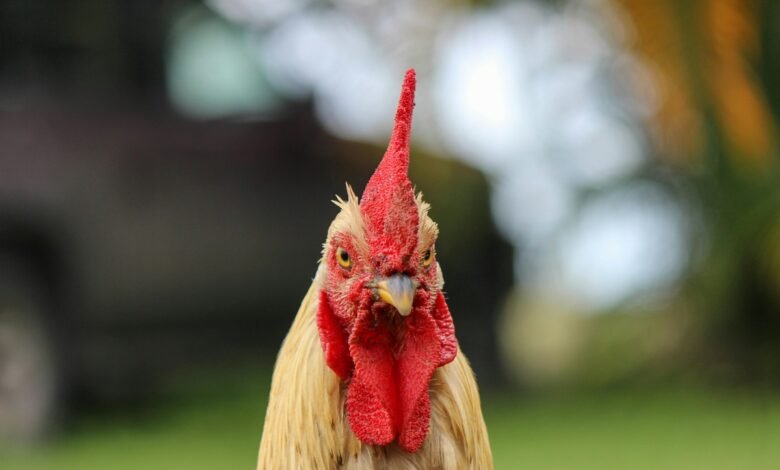Comprehensive Guide for Farmers: The Five Most Difficult to Treat Poultry Diseases & Their Impact on Farming Operations

The well-being of poultry is a cornerstone of successful farming. With the rise of intensive farming, poultry diseases present one of the gravest threats to the livestock industry. These diseases can disrupt the delicate balance of productivity and animal health, leading to significant economic losses. Consequently, understanding and addressing these concerns is critical. This guide will delve into the complexities of poultry maladies notorious for their resistance to treatment.
This section segues into a discussion of why some poultry ailments prove particularly refractory to intervention. Not only does disease management play a pivotal role in maintaining flock health, but it also ensures the stability of the supply chain critical to consumers. Throughout the guide, we’ll explore the major challenges farmers face when tackling such health issues. By doing so, we empower them with the knowledge to mitigate the impact of these formidable poultry diseases and maintain sustainable farming operations.
Avian Influenza
Avian Influenza, known colloquially as bird flu, is a viral infection that spreads easily among avian species and causes high mortality rates. Its presence in a flock can be devastating, often leading to severe production losses or, in worst-case scenarios, the culling of entire flocks to prevent further spread. This section breaks down the complexity of Avian Influenza, focusing on the reasons why treatment options are limited and highlighting the importance of prevention and containment efforts.
Recognizing the signs of Avian Influenza early is critical for prompt action. Farmers must watch for reduced egg production, respiratory distress, and abnormal mortality patterns among their birds. Unfortunately, given the rapid mutation of the virus, vaccination programs can be less effective, leading to difficulties in containing outbreaks. Moreover, strict biosecurity measures are essential in preventing the introduction and dissemination of the virus. The guide emphasizes that, while treatment options are constrained, proactive management and dedicated adherence to disease prevention protocols can significantly curtail the threat of Avian Influenza on poultry farms.
Newcastle Disease
Newcastle Disease is a highly contagious and fatal viral disease affecting various bird species, especially domestic poultry, which can incur substantial economic losses for farmers. With its propensity to infect large flocks swiftly, this disease ranks as one of the most serious avian illnesses worldwide. It poses a challenging conundrum due to the resilience of its viral strains and the potential for severe outbreaks.
Birds grappling with Newcastle Disease exhibit a wide array of symptoms, such as nervous behaviors, digestive dysfunction, and respiratory issues. Detecting these signs is crucial for swift intervention, though effective treatment options are lacking. Confronted with such challenges, vaccination emerges as the primary line of defense. However, the effectiveness of vaccines can vary based on the viral strain and the presence of maternally derived antibodies in young chicks, complicating the protection efforts. Farmers are pushed to focus heavily on preventative measures, including strict biosecurity protocols and regular monitoring to aid in controlling this pernicious disease.
Infectious Bronchitis
Infectious Bronchitis casts a formidable shadow on poultry health, known for its rapid spread and the significant respiratory distress it causes. This highly contagious viral disease not only affects respiratory function but also has ramifications for renal health and can severely impact egg production and quality. Given its mutable nature, the virus continually poses new challenges for treatment and prevention.
Infected birds present with coughing, sneezing, and nasal discharge, among other respiratory symptoms, prompting immediate concern in observant farmers. However, treatment of Infectious Bronchitis is largely supportive and non-specific due to the absence of effective antiviral medications for poultry. Instead, the emphasis lies in prevention through vaccination. Even so, the constant evolution of the virus can render vaccines less effective over time, requiring ongoing research and development for vaccine updates. The continuous need for vigilance in biosecurity practices and vaccine program assessments is vital for managing the disease’s impact on poultry operations.
Fowl Pox
Fowl Pox is a chronic, slow-spreading viral disease that poses a significant challenge in poultry management due to its two manifestations: cutaneous and diphtheritic forms. The former presents as wart-like lesions on unfeathered skin, while the latter produces severe respiratory distress. This disease’s tendency to impair both the physical condition and productivity of birds makes it a formidable obstacle in poultry farming.
There is no direct treatment for Fowl Pox once birds are affected, which compels farmers to turn their efforts towards prevention. Vaccination is the most effective measure; however, the timing and administration of the vaccine are critical for achieving optimal protection. Furthermore, vaccine strains must be compatible with the specific Fowl Pox viruses present in the region. The lack of therapeutic options shifts the focus to maintaining a high standard of farm hygiene and vector control to minimize the spread of the disease. Ultimately, a proactive approach in implementing stringent biosecurity and vaccination protocols is key to defending poultry flocks against the challenges of Fowl Pox.
Mycoplasmosis
Mycoplasmosis presents a unique and onerous challenge within poultry farming due to the insidious nature of the Mycoplasma organisms. These bacteria are known for causing chronic respiratory disease in poultry and can also affect the joints and reproductive systems, leading to decreased productivity and economic losses. The disease is especially pervasive, and once it takes hold within a flock, eradicating it becomes an arduous task.
Symptomatic treatment, like administering antibiotics, can sometimes manage the clinical signs, yet it does not eliminate the bacteria, and the risk of resistance further complicates this approach. Additionally, the bacteria’s ability to evade the host’s immune system prolongs their persistence in the flock and complicates vaccination efficacy. Diagnosis often requires laboratory testing due to the nondescript nature of the symptoms, delaying actionable responses. Ultimately, stringent biosecurity practices and the development of an all-encompassing management plan—factoring in aspects like flock density and stress reduction—are critical in controlling Mycoplasmosis within poultry populations.
Prevention and Management Strategies
When it comes to addressing the challenges posed by the most formidable poultry diseases, prevention and management strategies take center stage. Biosecurity, a comprehensive set of prevention measures, stands as the first line of defense against the incursion and spread of diseases within a poultry operation. It encompasses everything from rigorous cleaning and disinfection routines to visitor and equipment control, aiming to create a barrier between healthy flocks and potential pathogens.
Vaccination is another pivotal component in disease prevention. While it may not offer a complete guarantee against infection, it plays a crucial role in reducing the severity of diseases and minimizing the risk of large-scale outbreaks. Farmers must also adhere to strict hygiene practices, ensuring that housing, feed, and water are kept clean and free from contamination. By staying informed about the latest developments in poultry health management and conforming to recommended practices, farmers can significantly mitigate the threats posed by infectious diseases. The future of poultry farming relies on a proactive approach—prioritizing prevention, staying abreast of evolving challenges, and adapting management practices accordingly.
Key Takeaway
The battle against poultry diseases is an ongoing and challenging aspect of farming. Through this guide, we’ve examined the nature of the five most challenging diseases to treat in poultry and the reasons they are so formidable. The recurring theme emphasizes that while treatment options are limited, effective prevention and management strategies are indispensable. By understanding both the diseases and the means to counteract them, farmers can foster healthier flocks and more resilient operations.
This dialogue highlights the necessity for farmers to engage in continuous learning and application of best practices in disease prevention and flock management. As the industry advances, staying informed becomes crucial to safeguarding against these complex poultry diseases. By taking proactive steps and leveraging available support resources, farmers can not only manage current challenges but also prepare for emerging threats in poultry health. Commitment to this ongoing process will fortify the poultry industry’s ability to thrive amid adversity.


